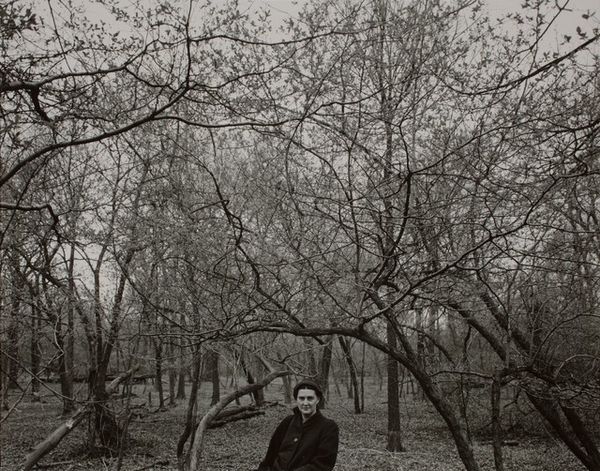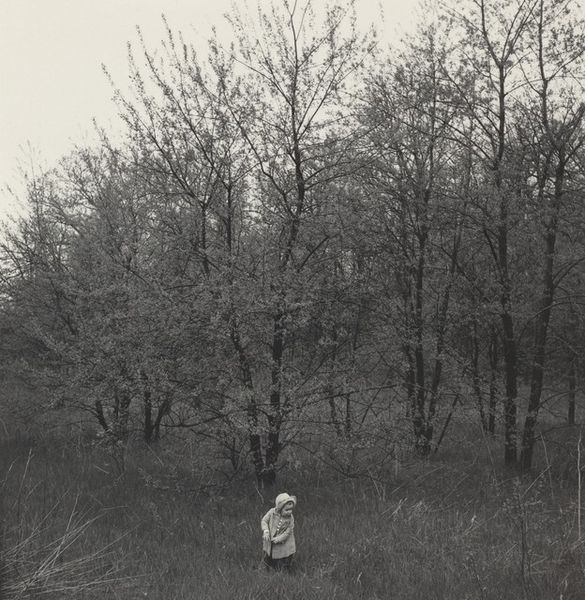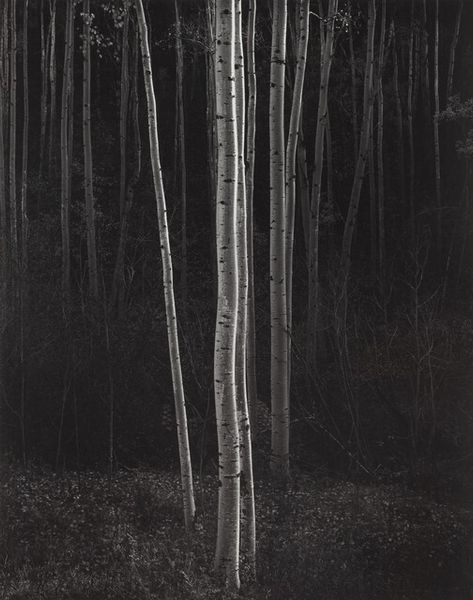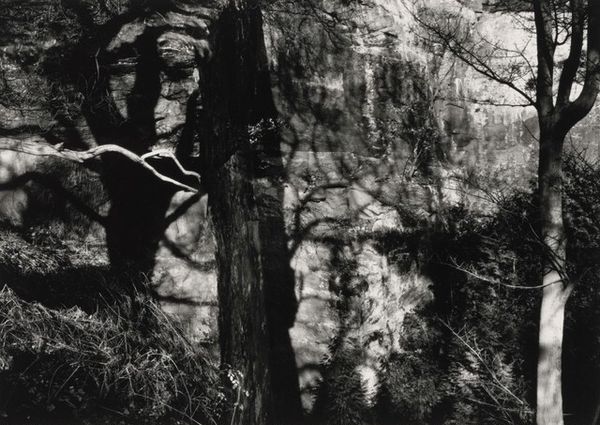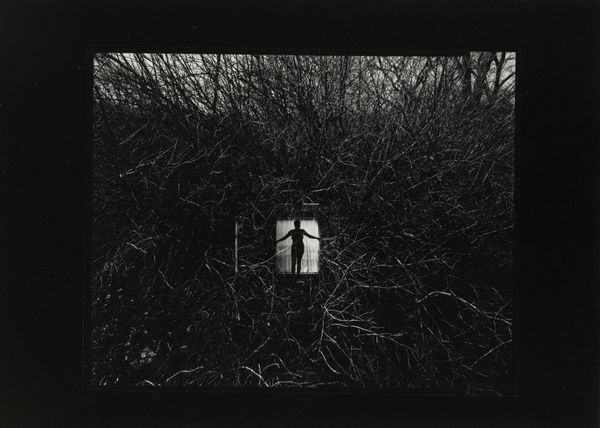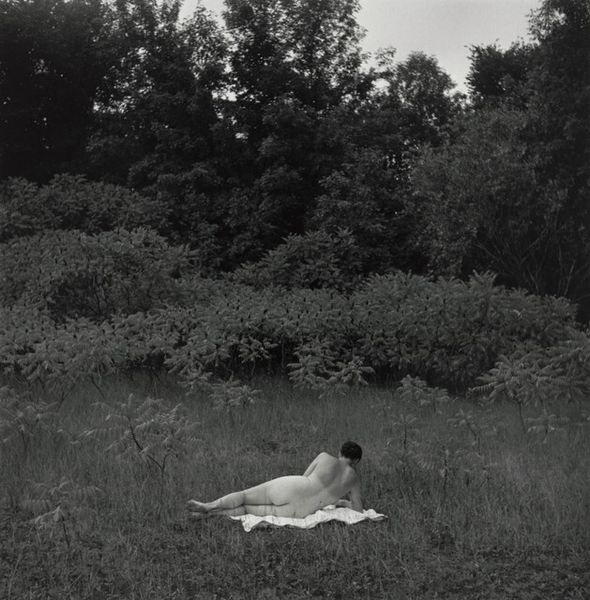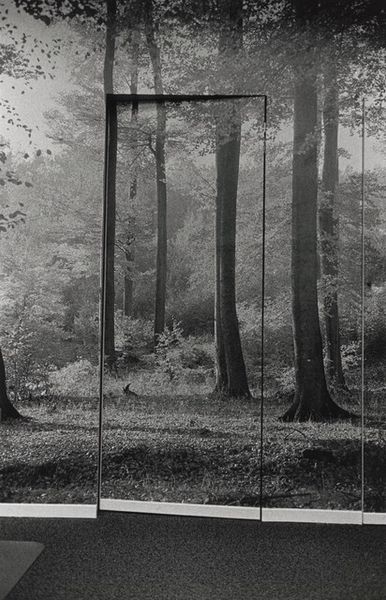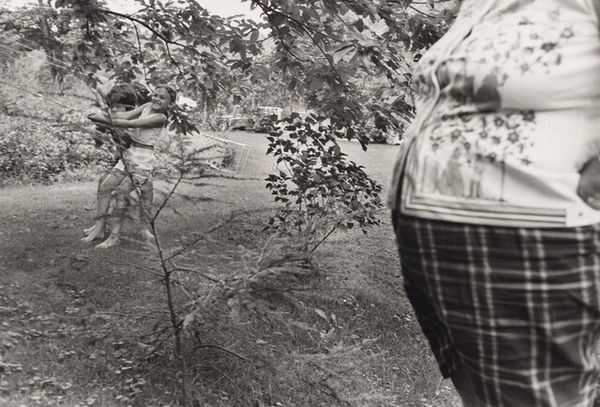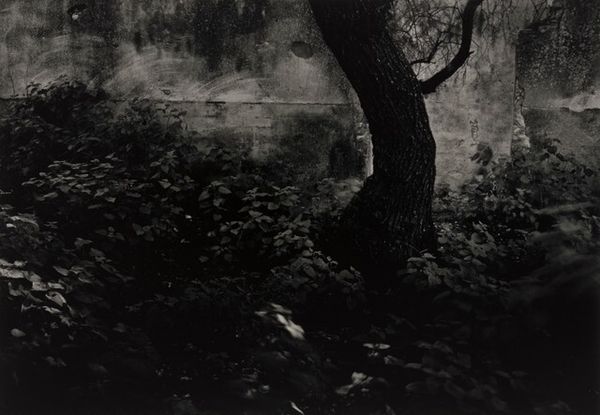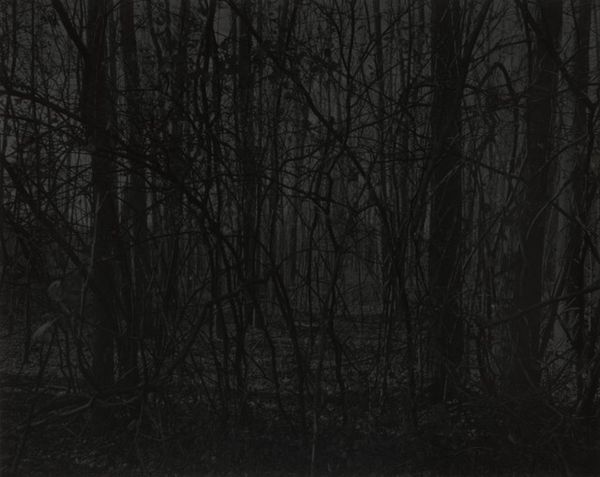
photography, gelatin-silver-print
#
portrait
#
black and white photography
#
landscape
#
photography
#
gelatin-silver-print
#
monochrome photography
#
monochrome
#
modernism
#
realism
#
monochrome
Dimensions: sheet (trimmed to image): 19.1 x 24.4 cm (7 1/2 x 9 5/8 in.) mount: 19.9 x 25 cm (7 13/16 x 9 13/16 in.)
Copyright: National Gallery of Art: CC0 1.0
Editor: Here we have Harry Callahan's "Eleanor, Chicago" from 1952, a gelatin silver print. It's a stark, almost severe image. Eleanor, the subject, is surrounded by a dense forest, making her seem quite isolated. What do you see in this piece? Curator: The positioning of Eleanor, almost centered but dominated by the height of the trees, definitely evokes isolation. Considering Callahan's broader body of work, how does this portrait function within the patriarchal conventions often present during the 1950s? Does her isolation highlight a societal confinement? Editor: I hadn't thought of it that way. I was just focusing on the visual aspect of the photograph. Curator: Think about the limited roles often assigned to women during that era. Eleanor stands within the landscape but seems separate from it. Is Callahan commenting on the societal barriers that constrained women's agency and expression, even within the domestic sphere suggested by the title’s reference to "Chicago"? Editor: So you’re saying the composition, with Eleanor being relatively small compared to the forest, might not just be an aesthetic choice, but a statement about the limited power women had at that time? Curator: Precisely. Callahan often photographed his wife, Eleanor. Does he give her agency, or is she an object? Consider also the male gaze inherent in much of art history, and if Callahan replicates or subverts it. What kind of relationship exists between artist and model? Editor: That gives me a lot to consider about the relationship between the photographer, his subject, and the social context of the time. Curator: Absolutely. Looking at art through a critical lens can unveil hidden narratives and provide powerful insights. Editor: Thanks. I’ll definitely look at Callahan’s work differently now.
Comments
No comments
Be the first to comment and join the conversation on the ultimate creative platform.

